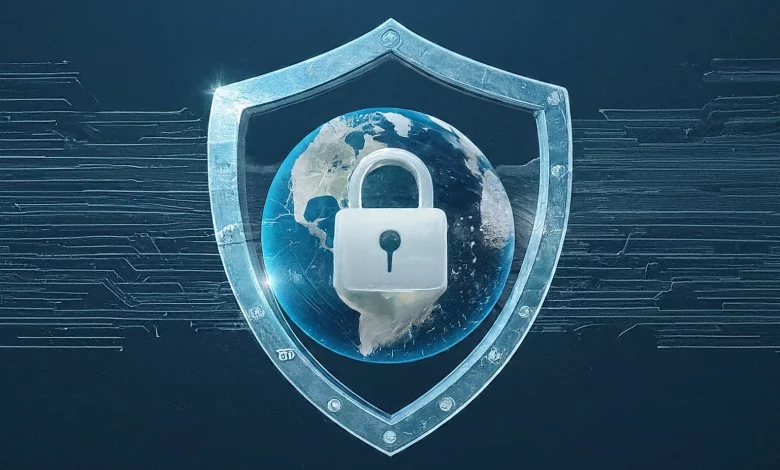Ensuring Family Safety Online: Internet Security for Parents

The digital era has brought numerous benefits, but it has also exposed families to various online risks. As parents, ensuring the safety of our loved ones in the virtual world is paramount. From cyberbullying to potential exposure to inappropriate content, the internet poses various threats that demand our attention.
I. Introduction
A. The importance of online safety for families
In today’s interconnected world, families spend a significant amount of time online. Whether for educational purposes, entertainment, or socializing, the internet has become an integral part of our lives. However, this increased connectivity comes with its own set of challenges, making it crucial for parents to prioritize online safety.
B. The prevalence of online threats
Online threats such as cyberbullying, exposure to inappropriate content, the presence of online predators, and the risk of identity theft are prevalent. Understanding these risks is the first step toward creating a secure online environment for the family.
II. Understanding Online Risks
A. Cyberbullying
Cyberbullying is a pervasive issue that can have serious consequences for children and adolescents. Parents need to be aware of the signs and address this issue promptly through open communication.
B. Inappropriate content
The internet is a vast space, and not all content is suitable for every age group. Setting up effective parental controls is essential to filter out inappropriate material and protect children from exposure.
C. Online predators
Vigilance is key when it comes to online predators. Educating children about the dangers of sharing personal information online and monitoring their interactions can help mitigate this risk.
D. Identity theft
Identity theft is a growing concern, even for children. Parents must take steps to safeguard their family’s personal information and educate their children about the importance of online privacy.
III. Steps to Ensure Family Safety
A. Open communication
Establishing open communication with children is foundational to online safety. Encourage them to share their online experiences, and be approachable so they feel comfortable discussing any concerns.
B. Setting up parental controls
Investigate and implement robust parental control settings on devices and internet services. These controls can restrict access to age-inappropriate content and limit screen time.
C. Educating children about online risks
An informed child is better equipped to navigate the online world responsibly. Teach them about the potential risks and guide them on making safe choices while using the internet.
D. Regularly monitoring online activities
Regularly check your child’s online activities without invading their privacy. Understanding their online interactions allows you to identify and address potential risks proactively.
IV. Choosing Reliable Security Software
A. Overview of different security software
There are various security software options available, each with its unique features. Research and choose a reliable program that aligns with your family’s specific needs.
B. Features to look for
Look for security software with features like real-time monitoring, content filtering, and device-specific controls. These features enhance your ability to protect your family online effectively.
C. Reviews and recommendations
Explore reviews and seek recommendations from other parents or online communities to ensure you select security software that has proven effective in real-world scenarios.
V. Creating Strong Passwords
A. Importance of strong passwords
Passwords act as the first line of defense against unauthorized access. Emphasize the importance of creating strong, unique passwords for each online account.
B. Tips for creating secure passwords
Guide your family in creating complex passwords by incorporating a mix of uppercase and lowercase letters, numbers, and special characters. Avoid easily guessable information such as birthdays or names.
C. Using password management tools
Simplify the process of managing multiple passwords by using reliable password management tools. These tools not only enhance security but also make it easier for family members to access their accounts securely.
VI. Keeping Software and Devices Updated
A. Importance of updates
Regularly updating software and devices is crucial to patch vulnerabilities and protect against emerging threats. Set up automatic updates whenever possible.
B. Setting up automatic updates
Configure devices and software to receive automatic updates to ensure that your family’s devices are always equipped with the latest security patches.
C. Checking for software vulnerabilities
Stay proactive by periodically checking for vulnerabilities in the software and devices your family uses. Address any identified issues promptly to maintain a secure online environment.
VII. Safe Browsing Habits
A. Teaching children safe internet practices
Instill safe browsing habits in your children, such as verifying website authenticity, avoiding pop-ups, and recognizing secure websites.
B. Identifying phishing attempts
Educate your family on recognizing and avoiding phishing attempts. Teach them not to click on suspicious links or provide personal information to unknown sources.
C. Avoiding suspicious websites
Guide your family on avoiding websites that may contain malware or inappropriate content. Establish a rule to seek parental approval before accessing new websites.
VIII. Social Media Awareness
A. Privacy settings on social media platforms
Adjust privacy settings on social media platforms to control who can view and interact with your family’s online profiles.
B. Discussing the risks of oversharing
Encourage responsible social media usage by discussing the potential risks of oversharing personal information, including location details and daily routines.
C. Monitoring social media activity
Regularly monitor your family’s social media activity to stay informed about their online interactions and address any concerns promptly.
IX. Cybersecurity Education for the Family
A. Regularly updating family on online threats
Stay informed about the latest online threats and update your family on potential risks. Knowledge empowers them to make informed decisions while using the internet.
B. Participating in cybersecurity workshops
Engage in cybersecurity workshops or programs that provide practical tips and insights for maintaining a secure online environment.
C. Encouraging responsible online behavior
Instill a sense of responsibility in your family members regarding their online behavior. Emphasize the impact their actions can have on their safety and the safety of others.
X. Emergency Protocols
A. Teaching children what to do in case of an online threat
Establish clear protocols for your family in case of an online threat. Teach children how to recognize danger and report incidents to parents or guardians.
B. Creating emergency contact lists
Prepare emergency contact lists that include relevant authorities, helplines, and trusted family members. This ensures swift action in case of an online emergency.
C. Reporting incidents to appropriate authorities
Instruct your family on the importance of reporting online incidents to the appropriate authorities. This proactive approach helps address issues at a broader level.
XI. Balancing Privacy and Connectivity
A. Respecting family members’ privacy
Strike a balance between monitoring online activities and respecting privacy. Build trust by being transparent about the reasons behind certain safety measures.
B. Finding the right balance between online and offline activities
Encourage a healthy balance between online and offline activities. Engage in family activities that promote face-to-face interactions and physical well-being.
C. Encouraging healthy technology usage
Guide your family on responsible technology usage, emphasizing the importance of breaks and setting realistic time limits for screen-based activities.
XII. Addressing Online Challenges Together
A. Encouraging open dialogue about online experiences
Create an environment where family members feel comfortable sharing their online experiences and challenges. Open dialogue helps address issues promptly.
B. Seeking professional help if needed
If faced with serious online challenges, consider seeking professional help. Therapists or counselors specializing in online safety can provide valuable guidance.
C. Building a supportive online community
Encourage your family to participate in positive online communities that share common interests. A supportive online environment can provide an additional layer of security.
XIII. Reviews and Updates
A. Regularly reassessing and updating safety measures
The online landscape evolves, and so should your safety measures. Regularly reassess and update your family’s online safety strategies to stay ahead of potential threats.
B. Staying informed about new online threats
Stay informed about emerging online threats by following reputable cybersecurity sources. Knowledge is a powerful tool in protecting your family against evolving risks.
C. Adapting strategies as technology evolves
As technology advances, adapt your strategies to meet new challenges. Embrace new security features and practices that align with the latest advancements in digital safety.
XIV. Conclusion
A. The continuous effort required for family online safety
Ensuring family safety online is an ongoing effort that demands continuous attention and adaptation. By staying informed and implementing proactive measures, parents can create a secure online environment for their loved ones.
B. The positive impact of a secure online environment
A secure online environment fosters a positive digital experience for the family, allowing them to reap the benefits of the internet while minimizing the associated risks.
If you found this article helpful, please consider sharing it with other parents seeking to enhance their family’s online safety.





